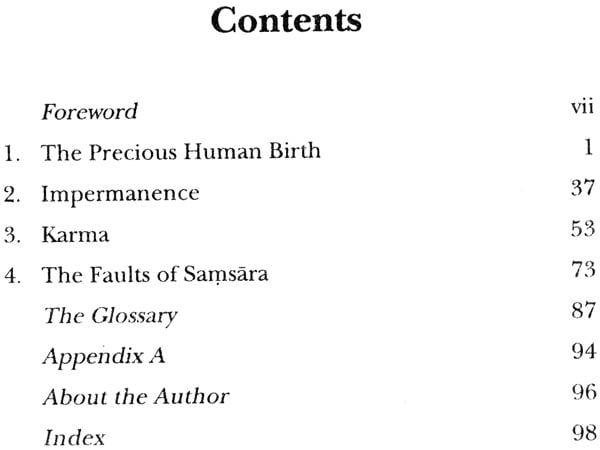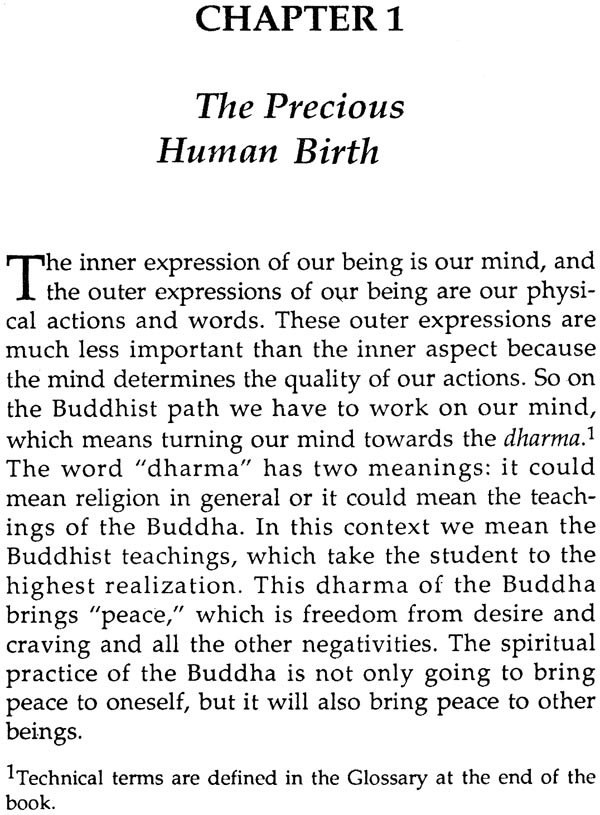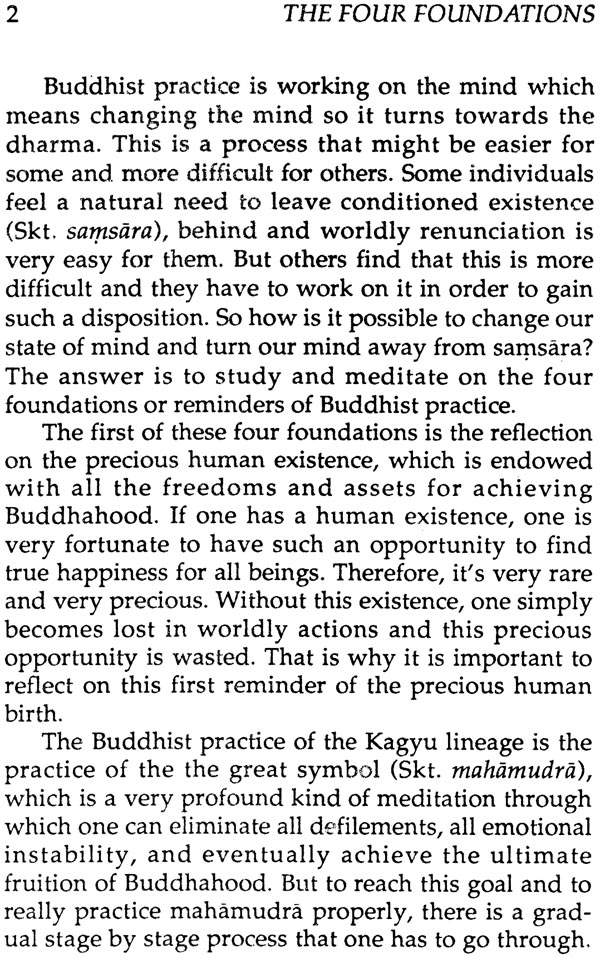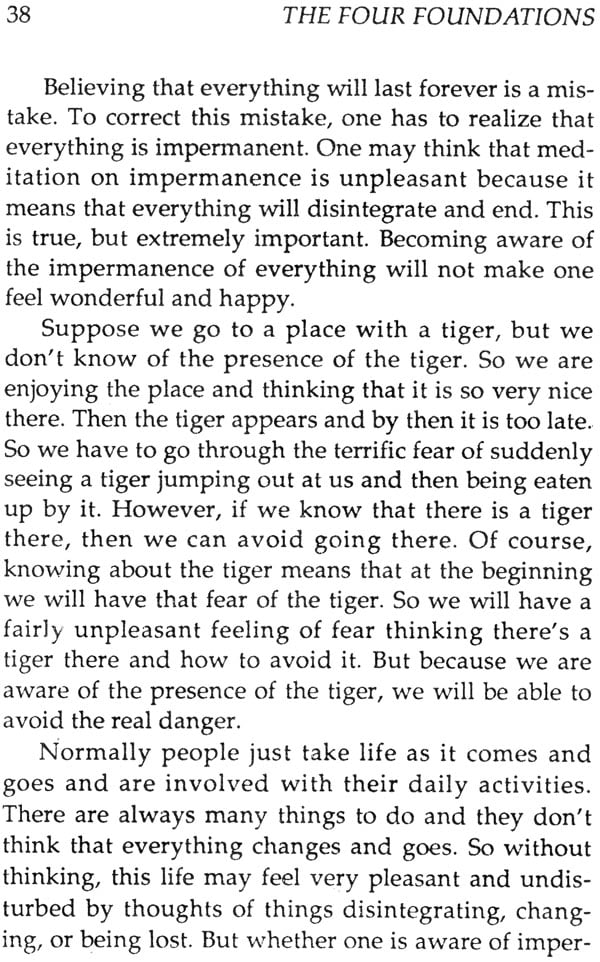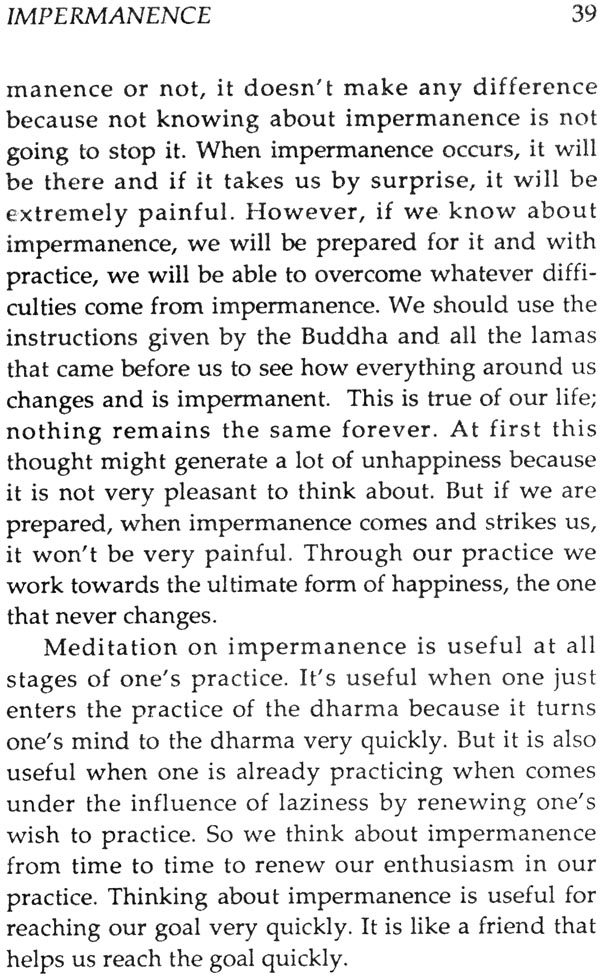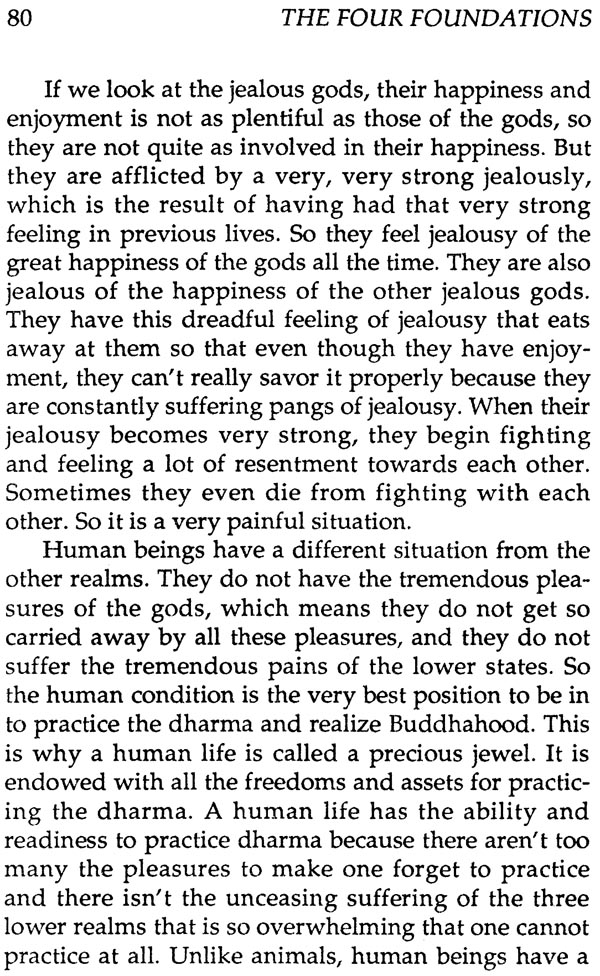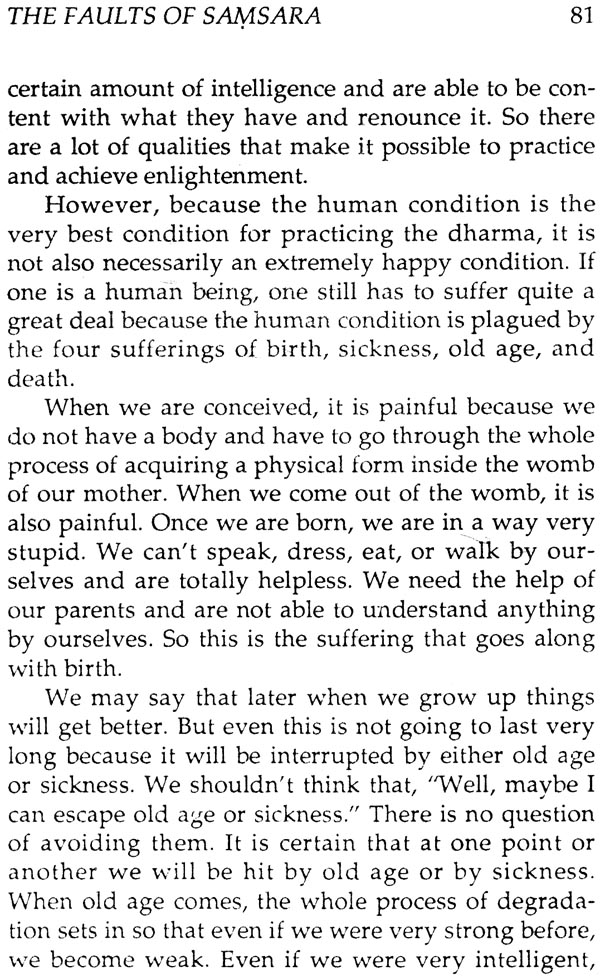
The Four Ordinary Foundations of Buddhist Practice (Tib. tun mong gi ngon dro shi)
Book Specification
| Item Code: | NAS099 |
| Author: | Khenchen Thrangu Rinpoche |
| Publisher: | Sri Satguru Publications |
| Language: | English |
| Edition: | 1994 |
| ISBN: | 8170304164 |
| Pages: | 112 |
| Cover: | HARDCOVER |
| Other Details | 8.50 X 5.50 inch |
| Weight | 270 gm |
Book Description
During the fifth century before our era, a tremendous explosion of philosophical thought appeared on the earth. During this time, the Buddha began delivering a remarkable set of teachings. He taught that instead of relying on a god or on materialistic pursuits, one can attain true, permanent happiness by’ simply examining one’s own mind.
When Tibet became a Buddhist nation beginning in the eighth century A.D., the great practitioners and learned scholars who came from India were faced with the problem of how to convey the Buddhist teachings to a large population of traders and farmers who for the most part were illiterate. The great Indian scholar Atisa brought the Four Foundations of Practice to Tibet in the eleventh century. These four foundations are identical to the "four thoughts that turn the mind towards dharma" that were taught by the great meditator Gampopa. He elaborated on these and these four thoughts have served to help thousands of students in Tibet to understand why they should begin dharma practice. Because these four thoughts are the basic reason for practicing dharma, they are ‘said to be the four general foundations of Buddhist practice.
These foundations are general to all levels and all sects of Buddhism and can be contrasted to the four special foundations (Tib. ngondro) which are specific to Vajrayana Buddhism.
Khenpo Thrangu Rinpoche was born in Kham in 1933. At the age of five he was formally recognized by the Sixteenth Karmapa and the previous Situ Rinpoche as the incarnation of the great Thrangu Tulku. At the age of sixteen he began the study of the three vehicles of Buddhism under the direction of Khenpo Lodro Rabsel. He also spent time in retreat. At the time of ‘the Chinese military takeover, Rinpoche left Tibet for Rumtek monastery in Sikkim where the Karmapa had his seat in exile. At the age of thirty-five he took the geshe examination and was awarded the highest degree of Rabjam. On his return to Rumtek he became abbot of Rumtek monastery and the Nalanda Institute for Higher Buddhist studies also at Rumtek. He has been the personal teacher of the four principle Kagyu tulkus: Shamar Rinpoche, Situ Rinpoche, Jamgon Kongtul Rinpoche, and Gyaltsab Rinpoche.
Thrangu Rinpoche has traveled extensively throughout Europe, the Far East and North America He is the abbot of Gampo Abbey in Nova Seotia, Canada and of Thrangu House in Oxford, England.
Rinpoche is the author of Tranquility and Insight, Buddha Nature, the Uttara. Tantra by this publisher, the Song of Lodro Thaye, the Differentiating Consciousness and Wisdom, and a series of texts on mahamudra meditation. He also has a book in German and in Spanish.
During the fifth century before our era, a tremendous explosion of philosophical thought appeared on the earth. In China Lao-tzu and Confucius were formulating a profound social and religious system which was to rule China for centuries and in Greece the beginning of "western philosophy" was being developed. In the Near East the Israelites were formulating their beliefs into a testament, and in India the Jainist and Buddhist were developing extremely complex philosophical and religious systems.
During this time, the Buddha began delivering a remarkable set of teachings. He taught that instead of relying on a god or on materialistic pursuits, one can attain true, permanent happiness by simply examining and working with one’s own mind. He put forth these ideas in the very first teaching that he ever gave at the age of 35 years old in a deer park in Beneres, India. One can still visit this very place 2,500 years later and wonder what he meant by these four noble truths. He began his teaching not with an abstract theory of god or how the universe was created, but with the desire of all human beings have, namely, the desire to be happy. Next he explained that our suffering and unhappiness which we all have is do to our tendency to be attached to things. We might want to have a house and material possessions, a spouse, a feeling of respect from others, a desire to be someone important, or to have fun and enjoy ourselves. All these things are mere desires based on our concepts of what is pleasant and what is unpleasant. When we actually look around us, we find to our surprise that those who have great material wealth are no more happy than those who have next to nothing—witness primitive "stone age tribes" in the Pacific and Africa where a whole tribe might own a few dozen possessions and the people are joyous and happy. Also those who have beautiful wives and many relations are no happier that the solitary hermit practicing in his cave. Or witness those persons who are constantly party.ng and "having a good time" who do not feel any more Satisfied in life than those who lead a more somber lifestyle. No, the Buddha said the way to achieve true and enduring happiness is not to rush headlong into external pursuits, but to lead a proper life following the eight-fold path and to examine our mind with the practice of meditation.
The Buddha continued teaching for the next fifty years and his thousands of disciples worked to pre- serve these teachings by not only memorizing what the Buddha had said, but also by doing the practices the Buddha suggested for reaching the state of complete and enduring happiness, the state of enlightenment. These teachings were later written down and could have easily have been lost during the Moslem invasion of India if it had not been the fact that many of these teachings were taken a few centuries earlier to Tibet and translated into Tibetan. The Tibetans were able to preserve over a hundred volumes of the direct teachings of the Buddha making a Buddhist "bible" dozens of times longer than the teachings of Lao-tzu, Moses, Jesus, Mohammed and other great religious teachers.
**Contents and Sample Pages**
